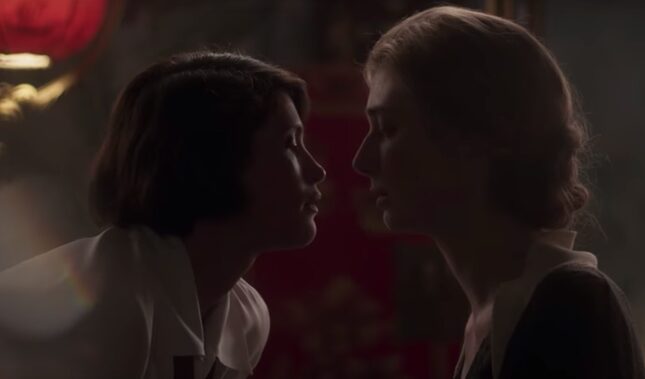
Screenshot: Thunderbird Releasing
Historical queer romances are having a moment. From 2018’s Colette to HBO’s Gentleman Jack, women who loved women in the 19th century are being recognized as the LGBTQ pioneers that they were. Chanya Button’s Vita and Virginia is another entry in this canon’s ongoing creation, but aside from its focus on the affair of its central protagonists, the film doesn’t quite capture the same intensely forward-moving energy as its spiritual predecessors.
Vita and Virginia centers on the authors Vita Sackville-West (Gemma Arterton) and Virginia Woolf (Elizabeth Debicki) and the affair they start after they meet briefly at a party. Their tryst is briefly all-consuming and eventually leads to Woolf’s publication of her classic novel Orlando.
It would be reductive to label Vita & Virginia a “feminist film,” but the story weaves distinctly feminist themes throughout. In the opening scene, Vita declares in a BBC radio interview that “independence has no sex,” and she holds to that sentiment tightly as she carries on her various extra-marital affairs. The two women are immediately drawn to each other and become consumed with their ongoing correspondence and romance.
-

-

-

-

-

-

-

-

-

-

-

-

-

-

-

-

-

-

-

-

-

-

-

-

-

-

-

-

-

-

-

-

-

-

-

-

-

-

-

-








































